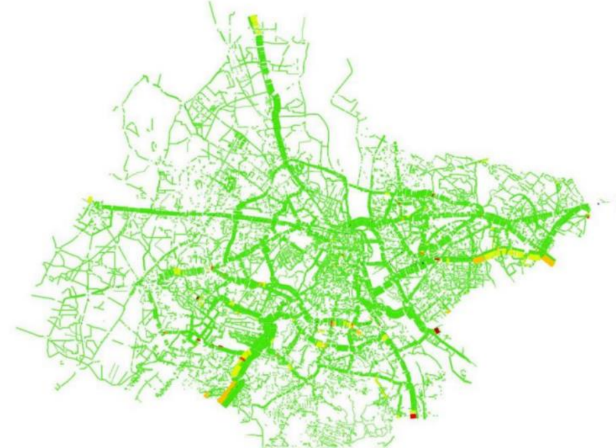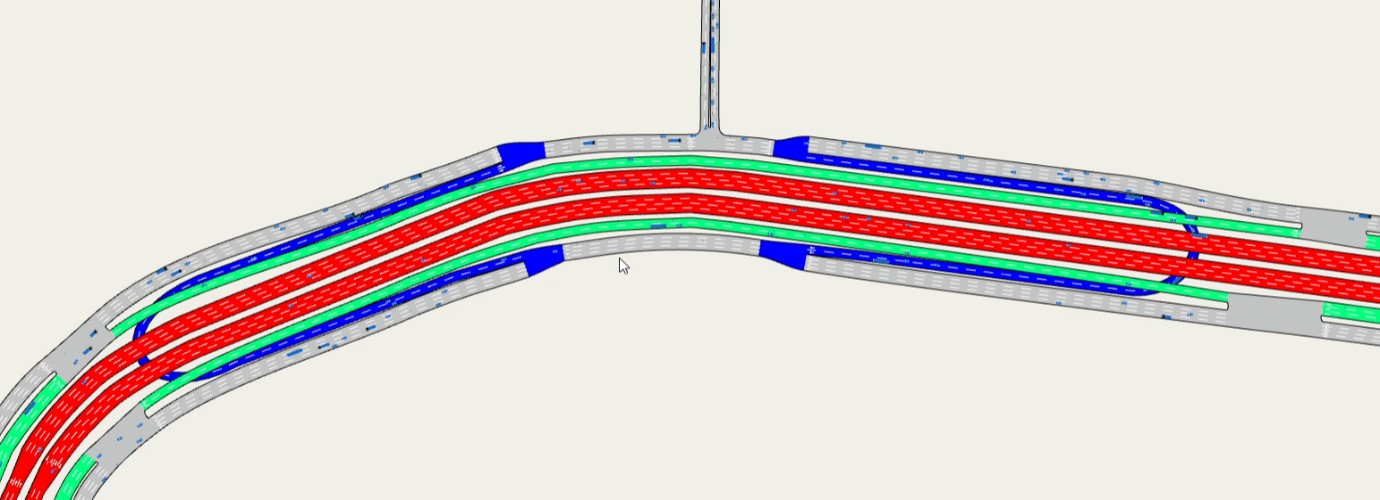Major cities internationally have identified the need to plan for congestion free cities and are investing in innovative Traffic Simulation based technology. Medulla Soft has committed itself to addressing the problem of traffic congestions, and identified simulations as the technology of relevance, incrementally building capacity, implementing solutions in Indian conditions and forming strategic partnerships with international leaders.
City Wide Decongestion Frameworks based on Simulation Technology help to:
MST has executed the first ever City-wide Simulation in India for Thane Municipal Corporation and globally one of the biggest City-wide Model for the city of New Delhi for more than 2,000 intersections and 16,000 Km length of road network.
Medulla-Soft Technologies developed a citywide Hybrid Traffic Simulation Model for Delhi city traffic along with road safety audit of 103 Blackspots and 896 intersections.
The road safety audit and the citywide traffic model are developed using advanced technologies like LiDAR data and a Hybrid Simulation platform that includes macro, meso and micro level model. The locations also include the crash hotspots identified by Delhi Road Crash Fatalities Report 2021, like Peeragarhi Chowk, Mulkarba Chowk, Chirag Dilli, and many more.
This is globally one of the biggest hybrid citywide traffic simulation models, that will help in assessing future proposals by quantifying the benefits in terms of reduction in delays and queue lengths at intersections. The proposed model will help in the identification and removal of bottlenecks responsible for traffic congestion. The reduction in travel times and queue lengths will help city to reduce emissions and enhance the urban mobility.
The finer level details required for the model development including existing street design, traffic data, street furniture, and utilities have been captured. The traffic data captured includes travel times, speed and delay data, and queue lengths at all the major intersections in Delhi.
The model will also be immensely beneficial in terms of testing and validity, proposed drawings and designs of the road infrastructure thus reducing the flaws occurred due to faulty designs and drawings.

The Delhi Hybrid Model Network
National Highways and Expressways in India are vastly different from other roads of the country.
We have introduced and have implemented our Simulation Model on National Highways and interconnected road networks to evaluate dynamic traffic flow and need of upgradation in a scientific way.
These models help authorities for identification and removal of bottlenecks responsible for traffic congestion across the highways reducing the travel time and resulted emissions. The carried Road Safety Analysis help produce designs that reduce the number accident blackspots and severity of crashes. Thus, also reduce costs by identifying safety issues and correcting them before projects are built with the awareness of safe design practices.
The recent examples of such projects are Bhumkar Chowk and Nashik Phata to Khed segment from the city of Pune, Maharashtra.

